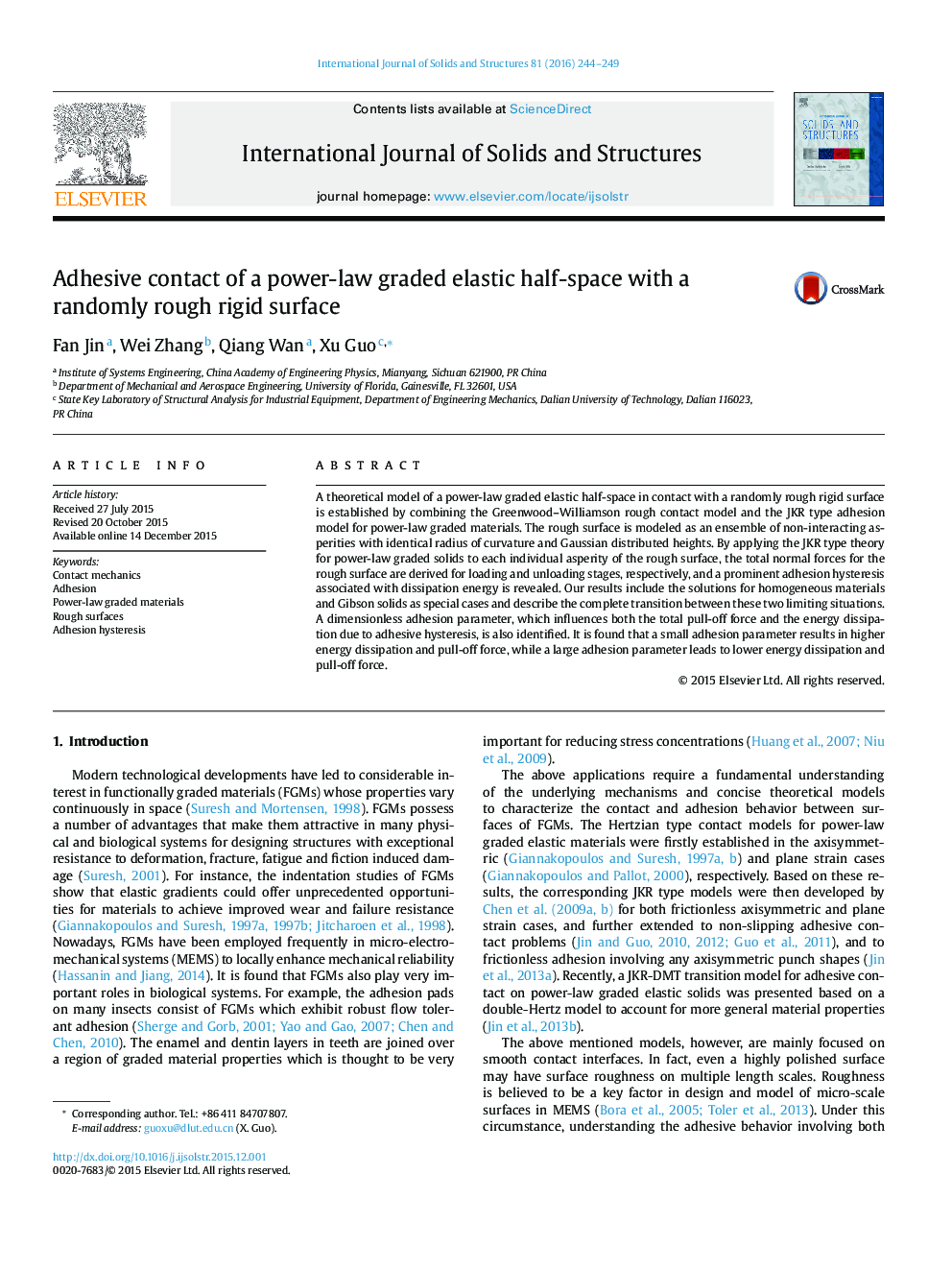| Article ID | Journal | Published Year | Pages | File Type |
|---|---|---|---|---|
| 277215 | International Journal of Solids and Structures | 2016 | 6 Pages |
A theoretical model of a power-law graded elastic half-space in contact with a randomly rough rigid surface is established by combining the Greenwood–Williamson rough contact model and the JKR type adhesion model for power-law graded materials. The rough surface is modeled as an ensemble of non-interacting asperities with identical radius of curvature and Gaussian distributed heights. By applying the JKR type theory for power-law graded solids to each individual asperity of the rough surface, the total normal forces for the rough surface are derived for loading and unloading stages, respectively, and a prominent adhesion hysteresis associated with dissipation energy is revealed. Our results include the solutions for homogeneous materials and Gibson solids as special cases and describe the complete transition between these two limiting situations. A dimensionless adhesion parameter, which influences both the total pull-off force and the energy dissipation due to adhesive hysteresis, is also identified. It is found that a small adhesion parameter results in higher energy dissipation and pull-off force, while a large adhesion parameter leads to lower energy dissipation and pull-off force.
